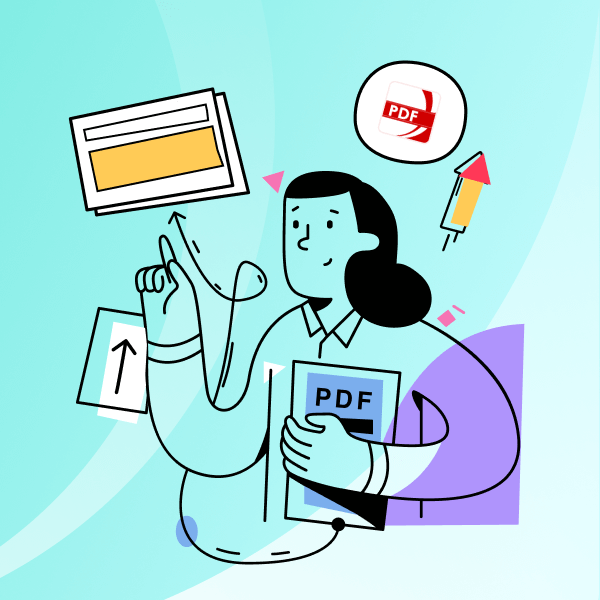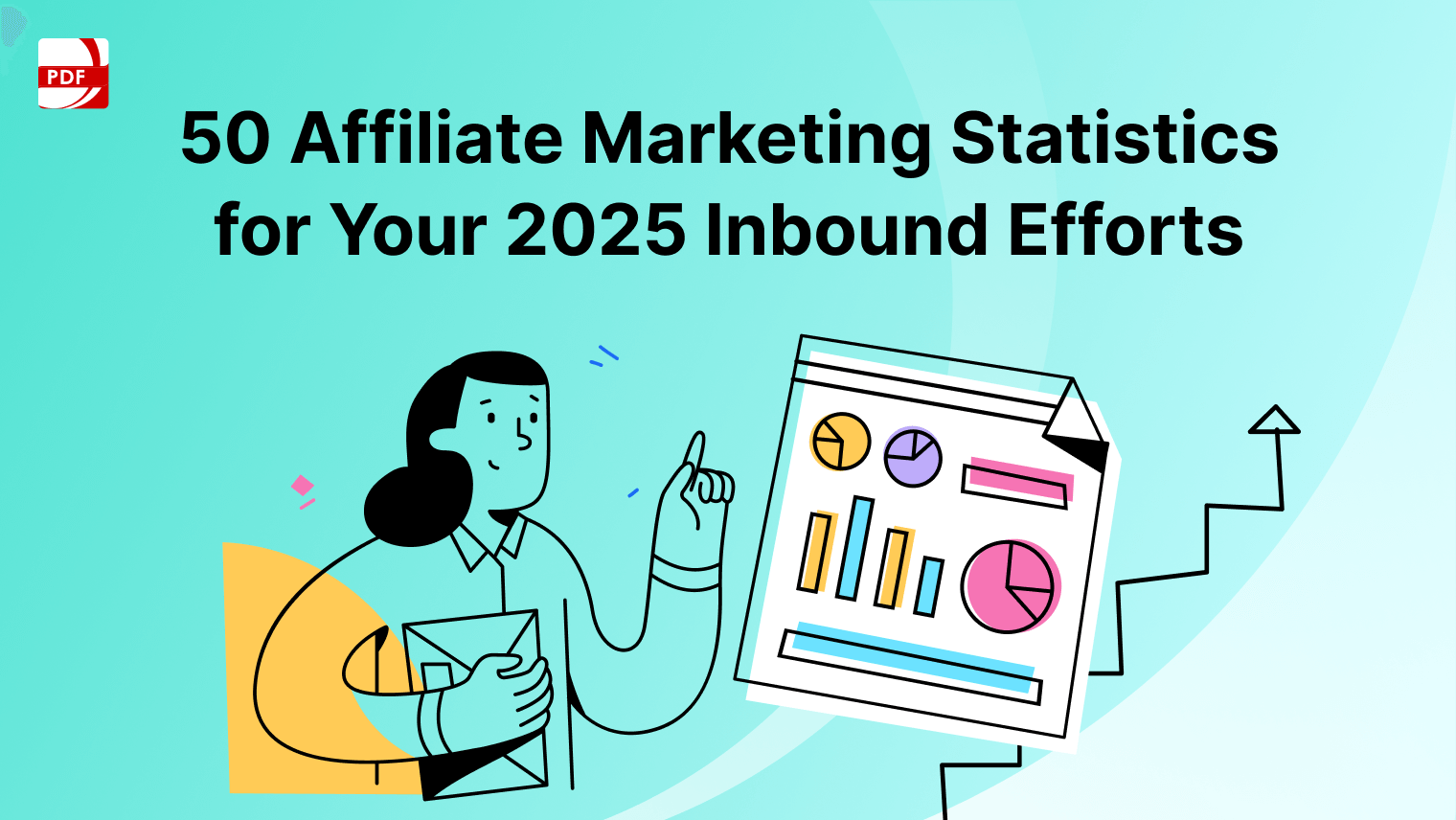The digital revolution has reshaped how we manage information, offering us a break from drowning in piles of paper documents. However, the convenience comes with its own set of challenges: security risks.
From phishing attempts to large-scale cyberattacks, your electronic documents are constant targets. This in-depth guide aims to equip you with proven strategies for digital document security, helping to ensure your confidential documents don't end up in the wrong hands.
- What is Digital Document Security?
- 10 Strategies for Enhanced Digital Document Security
- Document Security Best Practices
- Document Security FAQ
What is Digital Document Security?
Google Snippet Definition: Digital document security involves implementing robust protocols for storing, sharing, and managing electronic documents. This process safeguards your valuable information against unauthorized access, security breaches, and cyber threats.
The modern-day treasure trove—containing everything from personal photographs to confidential business documents—is increasingly targeted by hackers and organized crime rings. These nefarious entities seek to exploit vulnerabilities, aiming for financial gains or other ulterior motives. Digital document security is your fortress against such attempts, minimizing risks from both human error and external threats.
10 Strategies for Enhanced Digital Document Security
Let's review the 10 essential document security strategies that will ensure your digital safety and compliance.
1. Organize Your Digital Documents
Before diving into high-tech security measures, start with the basics: organization. In business environments, employees can lose hours searching for misplaced files, creating potential risks for unauthorized persons to access sensitive documents.
- Audit your documents: Inventory all your electronic documents to establish a coherent filing system. An organized storage structure mitigates the risks of data loss and duplication.
- Use a Hierarchical Structure: Create multiple categories and employ a tree structure for easier navigation.
- Regular Cleanup: Periodically replace obsolete files with updated ones and delete any that are no longer needed.
- Backup: To guard against hardware failure or accidental deletions, make regular backups of your essential documents.
2. Watermark Important Documents
Watermarking isn't just an ancient art; it’s a still-relevant technique for demonstrating ownership and deterring unauthorized duplication.
If you're a Windows user, check out our guide for adding watermarks to your PDFs!

Navigate, edit, and
convert PDFs like a Pro
with PDF Reader Pro
Easily customize PDFs: Edit text, images,
pages, and annotations with ease.
Advanced PDF conversion: Supports
multi-format document processing with OCR.
Seamless workflow on Mac,
Windows, iOS, and Android.
3. Use Robust Encryption Methods
Encrypt your documents before storing or sharing them. With encryption, even if someone breaches your storage, decoding the content without the appropriate decryption key becomes a near-impossible task. PDF Reader Pro offers excellent encryption methods to ensure your documents are secure.
4. Employ Multi-Factor Authentication
This is an added layer of security that requires not only a password and username but also something that only the authorized user has on them. This could be a piece of information only they should know or have, like a physical device.
5. Leverage Password Protection
Password protection offers an easy yet effective encryption method for your documents. When implementing password protection, adhere to these guidelines for a strong password:
- Use at least eight characters, incorporating a mix of upper and lowercase letters, symbols, and numbers.
- Avoid dictionary words or obvious personal details like birthdays.
- Use a password manager for extra security and convenience.
If you're a Mac user and need to add a password to your PDFs, check out our password protection guide!

Navigate, edit, and
convert PDFs like a Pro
with PDF Reader Pro
Easily customize PDFs: Edit text, images,
pages, and annotations with ease.
Advanced PDF conversion: Supports
multi-format document processing with OCR.
Seamless workflow on Mac,
Windows, iOS, and Android.
6. Opt for Digital Rights Management (DRM)
DRM technologies offer granular control over how your digital content is accessed, used, and shared. From e-books to customer lists, DRM helps protect your intellectual property.
7. Utilize Document Tracking and Audit Trails
This feature allows you to have a complete audit trail of who accessed your document, when, and from what IP address. You can monitor document activity to detect suspicious activity or unauthorized access.
8. Implement Document Expiry
Certain documents may only need to be accessible for a limited time. Use PDF Reader Pro's document expiry feature to set an expiration date, after which the document is automatically deleted.
9. Train Your Employees
In a business environment, employee training on best practices can dramatically reduce the risk of accidental leaks or security lapses.
10. Be Mindful of Mobile Devices
Mobile devices can be weak links in your security chain. Always ensure that you follow adequate security measures, such as disabling physical ports and avoiding public Wi-Fi, when accessing or transferring documents on mobile devices.
Document Security Best Practices
Ensuring the security of sensitive documents is a critical task in today's digital landscape. Whether it's financial reports, customer lists, or confidential business plans, the potential damage caused by these documents falling into the wrong hands is enormous. With 1 in 2 cases of security breaches resulting from human error, it's essential to implement a well-thought-out document security plan.
Transition from Paper to Electronic Documents
While paper documents may feel tangible and secure, they are susceptible to various risks like theft, damage, or loss. Electronic documents, on the other hand, can be safeguarded through various security features, including encryption and access rights, thus offering a more secure document environment.
Steps for Converting Paper Documents to Electronic Files
- Audit your Paper-Based System: Determine what needs to be digitized and what can be discarded.
- Use High-Quality Scanners: This ensures the digital copies are clear and legible.
- Integrate with Electronic Document Management Systems: These systems help manage, organize, and secure your files better than traditional paper-based methods.
Access Rights Management
Determining who should have what level of access is a cornerstone of document security. Granular control over access rights ensures that only authorized individuals can view or modify particular files.
-
Employee Training: Educate employees about the significance of document security and the risks of unauthorized access to sensitive data.
-
Access Levels: Assign different access rights based on job roles. For instance, an HR manager might have full access to employee records, while a junior staff member may have limited viewing rights.
-
Periodic Review: Regularly update and review access permissions to ensure they align with current job functions and responsibilities.
Protect Against Malicious Software
-
Anti-Malware Software: Installing robust anti-malware software can protect your documents from being compromised.
-
Regular Updates: Always update your security software to protect against the latest threats.
Document Activity Monitoring
-
Audit Trails: Keep logs of all activities related to your essential documents. This would include information such as who viewed the document, what changes were made, and the IP addresses from where these actions were taken.
-
Alerts for Suspicious Activity: Set up real-time alerts to notify administrators about any irregularities or unauthorized access attempts.
Setting Up Document Expiry
-
Time-Limited Access: For temporary projects or external collaborations, use document expiry features to restrict access after a specific date.
-
Automated Archiving: After the expiry date, the document should be moved to a secure archive for compliance and historical purposes.
Document Security FAQ
We compiled the most frequently searched questions regarding document security below.
Tracking Wellness: Diet and Exercise Journal
Сultivate healthy habits with our customizable journal template.
What are the benefits of an Electronic Document Management System over a Paper-Based System?
Electronic Document Management Systems offer advantages such as easy retrieval of documents, streamlined workflow, and enhanced security features like encryption and granular access control.
What are the common types of Document Security Measures?
Common measures include password protection, encryption, watermarking, digital rights management (DRM), and the use of secure document environments.
How to set a Strong Password for Document Security?
A strong password should contain a mix of upper and lower-case letters, numbers, and symbols. It should be random and not contain any easily identifiable information like your name or birthday.
How can I ensure my Customer Lists are Secure?
Customer lists should be encrypted and stored in a secure server. Access should only be granted to employees who need this information for their job functions.
What types of documents are considered Sensitive Documents?
Financial records, medical records, legal contracts, and customer lists are often considered sensitive documents that require special security measures.
What could be the Reputational Damage from a Document Security Breach?
Reputational damage could include loss of customer trust, legal repercussions, and a negative impact on your brand image.
How can I ensure that my Outgoing Documents are Secure?
Use encryption and secure channels for sending outgoing documents. Also, employ tracking features to monitor who is accessing these documents, from where, and what actions they are taking.
By implementing these best practices and being mindful of the FAQs, you can significantly mitigate the risks associated with document security.











 Support Chat
Support Chat